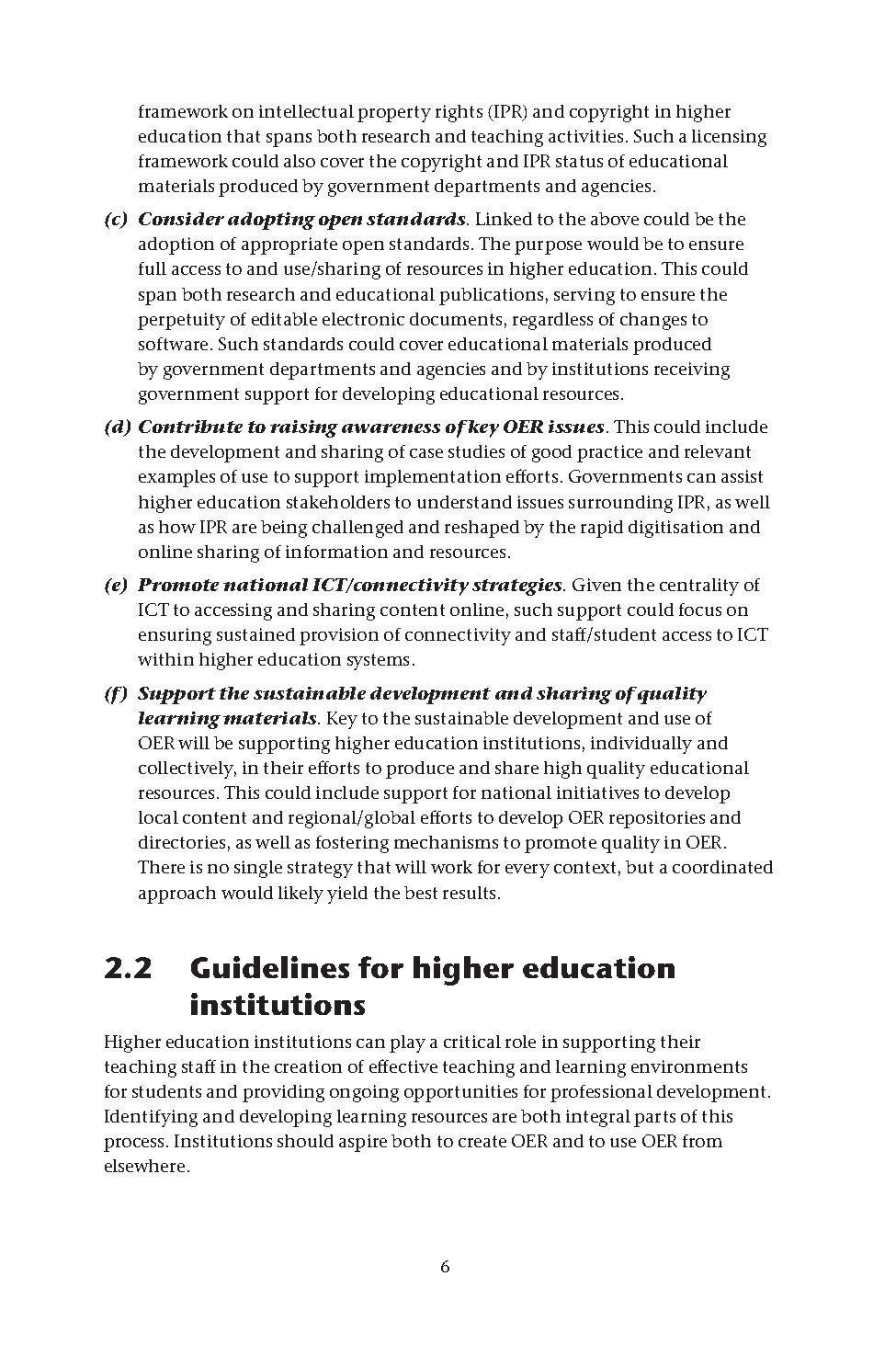This page has been validated.
- framework on intellectual property rights (IPR) and copyright in higher education that spans both research and teaching activities. Such a licensing framework could also cover the copyright and IPR status of educational materials produced by government departments and agencies.
- Consider adopting open standards. Linked to the above could be the adoption of appropriate open standards. The purpose would be to ensure full access to and use/sharing of resources in higher education. This could span both research and educational publications, serving to ensure the perpetuity of editable electronic documents, regardless of changes to software. Such standards could cover educational materials produced by government departments and agencies and by institutions receiving government support for developing educational resources.
- Contribute to raising awareness of key OER issues. This could include the development and sharing of case studies of good practice and relevant examples of use to support implementation efforts. Governments can assist higher education stakeholders to understand issues surrounding IPR, as well as how IPR are being challenged and reshaped by the rapid digitisation and online sharing of information and resources.
- Promote national ICT/connectivity strategies. Given the centrality of ICT to accessing and sharing content online, such support could focus on ensuring sustained provision of connectivity and staff/student access to ICT within higher education systems.
- Support the sustainable development and sharing of quality learning materials. Key to the sustainable development and use of OER will be supporting higher education institutions, individually and collectively, in their efforts to produce and share high quality educational resources. This could include support for national initiatives to develop local content and regional/global efforts to develop OER repositories and directories, as well as fostering mechanisms to promote quality in OER. There is no single strategy that will work for every context, but a coordinated approach would likely yield the best results.
2.2 Guidelines for higher education institutions
Higher education institutions can play a critical role in supporting their teaching staff in the creation of effective teaching and learning environments for students and providing ongoing opportunities for professional development. Identifying and developing learning resources are both integral parts of this process. Institutions should aspire both to create OER and to use OER from elsewhere.
6
